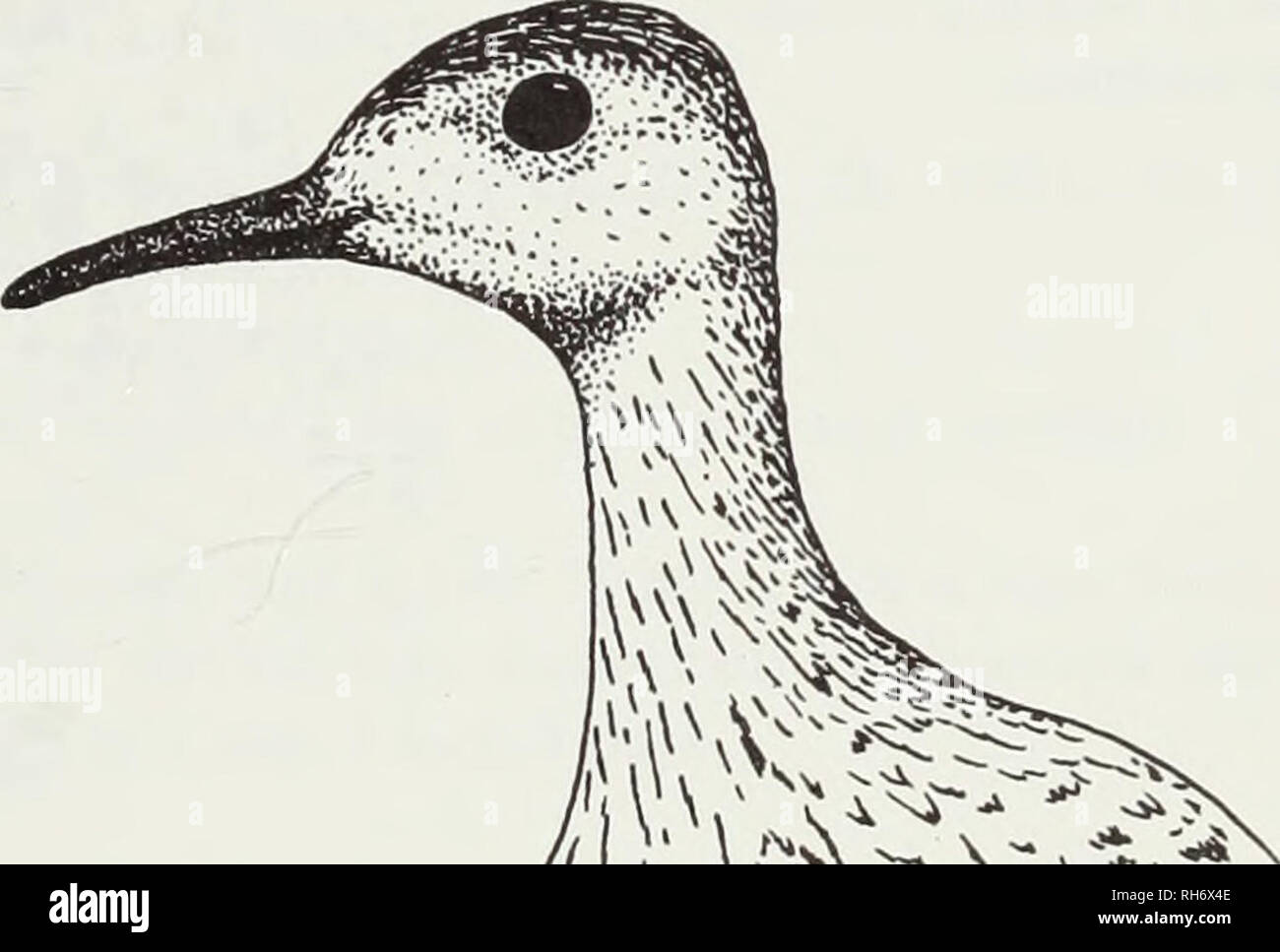. Breeding birds of Ontario : nidiology and distribution. Birds; Birds; Birds. Upland Sandpiper, Bartramia longicauda (Bechstein) Nidiology RECORDS 44 nests representing 20 provincial regions. Breeds on agricultural land in hay fields, unused pastures, and hawthorn meadows; breeds occasionally on airport grasslands. Nests were on the ground in standing grasses, which were sometimes short but more often at least 15 to 25 cm (6 to 10 inches) tall. Nests were usually in open grasslands, but 2 nests were at the bases of small trees, and 1 nest was within 9 m (30 ft) of a fence. Two nests were 9 an

Image details
Contributor:
Library Book Collection / Alamy Stock PhotoImage ID:
RH6X4EFile size:
7.2 MB (177.7 KB Compressed download)Releases:
Model - no | Property - noDo I need a release?Dimensions:
1924 x 1299 px | 32.6 x 22 cm | 12.8 x 8.7 inches | 150dpiMore information:
This image is a public domain image, which means either that copyright has expired in the image or the copyright holder has waived their copyright. Alamy charges you a fee for access to the high resolution copy of the image.
This image could have imperfections as it’s either historical or reportage.
. Breeding birds of Ontario : nidiology and distribution. Birds; Birds; Birds. Upland Sandpiper, Bartramia longicauda (Bechstein) Nidiology RECORDS 44 nests representing 20 provincial regions. Breeds on agricultural land in hay fields, unused pastures, and hawthorn meadows; breeds occasionally on airport grasslands. Nests were on the ground in standing grasses, which were sometimes short but more often at least 15 to 25 cm (6 to 10 inches) tall. Nests were usually in open grasslands, but 2 nests were at the bases of small trees, and 1 nest was within 9 m (30 ft) of a fence. Two nests were 9 and 61 m (30 and 200 ft) away from other occupied nests of the same species. Nests scrapes ranged from shallow to fairly deep depressions in the ground and were lined, often sparsely and loosely, with grasses and weed stalks, and sometimes with a few feathers. Some nests were canopied by tall grasses surrounding the site. EGGS 42 nests with 2 to 4 eggs; 2E (2N), 3E (5N), 4E (35N). Average clutch range 4 eggs (35 nests). INCUBATION PERIOD No information. EGG DATES 38 nests, 12 May to 9 July (48 dates); 19 nests, 27 May to 8 June. Breeding Distribution The upland sandpiper (Fig. 152A) breeds throughout the nonforested portions of southern Ontario and as far north as Sudbury. In the west it is observed and probably breeds sparingly between Thunder Bay and western Rainy River District.. At ^ "sr^8*: < -», "$( ;vxvv»? A^h? 177. Please note that these images are extracted from scanned page images that may have been digitally enhanced for readability - coloration and appearance of these illustrations may not perfectly resemble the original work.. Peck, George K; James, Ross, 1943-; Royal Ontario Museum. Toronto : Royal Ontario Museum